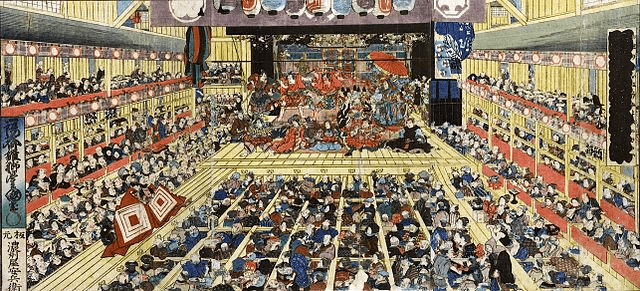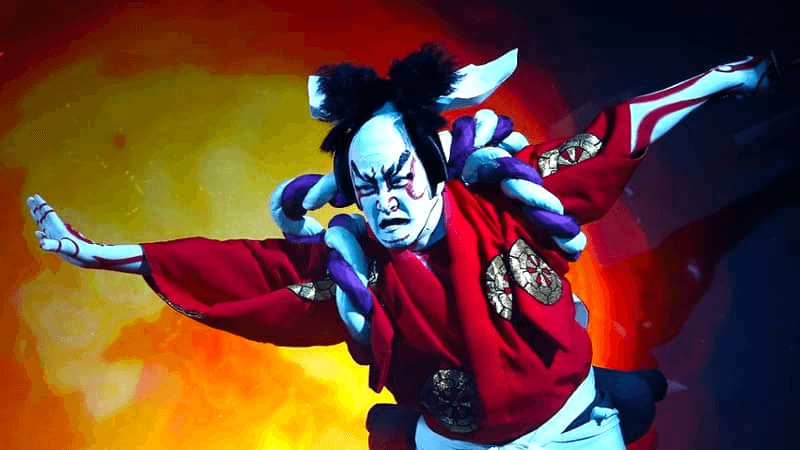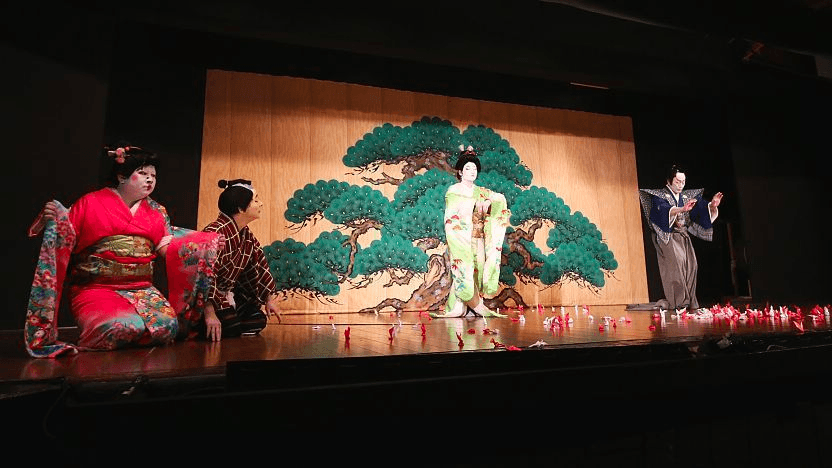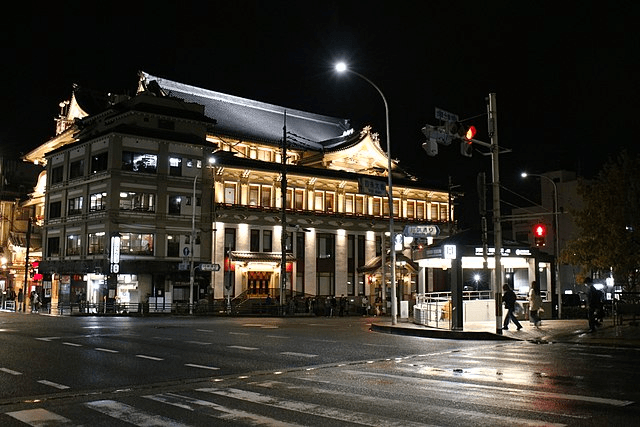Kabuki Diungkap: Panduan untuk Menikmati Teater Jepang
Perjalanan ke Dunia Teater Kabuki
Ringkasan
Teater Kabuki adalah bentuk seni tradisional Jepang yang telah memikat penonton selama lebih dari 400 tahun. Dengan kostumnya yang berwarna-warni, pertunjukan dramatis, dan desain panggung yang unik, Kabuki telah menjadi bagian penting dari warisan budaya Jepang. Jika Anda bepergian ke Jepang dan ingin mencoba teater Jepang, baca terus untuk mengetahui apa yang dapat diharapkan beserta beberapa kiat praktis untuk membantu Anda merencanakan kunjungan Anda.
Apa itu Kabuki?
Kabuki adalah bentuk teater yang mencakup unsur-unsur musik, tari, dan drama. Secara tradisional, teater Kabuki secara umum diklasifikasikan ke dalam tiga kategori: drama sejarah yang menggambarkan peristiwa yang terjadi di kalangan bangsawan dan kelas samurai sebelum periode Edo; drama domestik yang menggambarkan kehidupan penduduk kota selama periode Edo; dan karya tari yang mencakup unsur-unsur tari klasik. Saat ini, bentuk-bentuk baru Kabuki telah diciptakan, termasuk Kabuki yang telah diadaptasi dari komik manga seperti Naruto dan One Piece.

Teater Kabuki memiliki ciri khas tersendiri, seperti tata rias, kostum, dan desain panggung yang rumit dan aneh. Para aktor menggunakan tata rias yang khas untuk mengubah diri mereka menjadi karakter mereka, dan kostum mereka sering kali berwarna-warni dan sangat mendetail. Panggung itu sendiri dirancang untuk memungkinkan pintu masuk dan keluar yang dramatis, dengan pintu jebakan dan lift yang memungkinkan para aktor muncul dan menghilang dari panggung. Dalam teater Kabuki, dampak visual jauh lebih penting daripada alur cerita.
Sejarah Teater Kabuki
Teater Kabuki berawal pada awal abad ke-17, selama periode Edo di Jepang. Teater ini dikembangkan sebagai bentuk hiburan bagi masyarakat umum dan awalnya dipentaskan oleh kelompok yang semuanya perempuan. Akan tetapi, karena popularitasnya di distrik lampu merah dan kaitannya dengan prostitusi, pemerintah melarang pertunjukan Kabuki perempuan pada tahun 1629, dan peran-peran tersebut kemudian dimainkan oleh aktor laki-laki. Saat ini, Kabuki masih dipentaskan hanya oleh aktor laki-laki.

Selama bertahun-tahun, Kabuki telah berevolusi dan berkembang, dengan perubahan gaya dan konten yang mencerminkan perubahan zaman. Selama Restorasi Meiji di akhir abad ke-19, Kabuki mengalami masa kemunduran, karena dianggap ketinggalan zaman dan tidak sesuai dengan dunia modern. Namun, popularitasnya kembali meningkat pada abad ke-20 dan sekarang diakui sebagai bagian penting dari warisan budaya Jepang.
Mengalami Teater Kabuki
Pertunjukan kabuki biasanya berlangsung sekitar 4 jam, dan setiap pertunjukan biasanya terdiri dari tiga hingga empat babak. Beberapa pertunjukan menyediakan opsi untuk membeli tiket satu babak, yang merupakan pilihan tepat bagi mereka yang hanya ingin menyaksikan pertunjukan tetapi tidak ingin menghabiskan waktu setengah hari.

Untuk dapat menikmati pertunjukan Kabuki secara menyeluruh, penting untuk memiliki pengetahuan tentang alur cerita dan karakter dalam drama tersebut. Pertunjukan akan menggunakan bahasa Jepang, tetapi jika Anda tidak mengerti bahasa Jepang, berikut ini beberapa kiat yang dapat membantu Anda lebih menikmati pertunjukan tersebut.
- Baca selengkapnyamemainkansebelum kunjungan Anda untuk memahami isi drama tersebut.
- Sebagian besar teater menyediakan sinopsis bahasa Inggris terperinci yang dapat Anda peroleh dari loket tiket, baik gratis maupun berbayar. Agar dapat menikmati pertunjukan, mungkin ada baiknya Anda memperoleh sinopsis dan mengenal karakter serta motivasi mereka.
- Beberapa teater menyediakan penyewaan panduan audio berbahasa Inggris, meskipun hal ini telah ditangguhkan sementara di sebagian besar teater hingga pemberitahuan lebih lanjut. Namun, jika layanan ini dilanjutkan selama kunjungan Anda, sangat disarankan agar Anda memanfaatkan opsi tersebut karena akan membantu Anda memahami dialog selama pertunjukan.
Etika Teater Kabuki

Ada beberapa etika dan norma yang perlu diperhatikan saat menonton Kabuki:
- Tetaplah tenang selama pertunjukan. Penonton biasanya sangat tenang sehingga bisikan sekecil apa pun mungkin tidak disukai.
- Tepuk tangan dan teriakan biasanya terjadi di sela-sela adegan. Penonton mungkin meneriakkan nama-nama aktor favorit mereka untuk menyemangati mereka — jangan ragu untuk ikut berteriak di bagian ini jika Anda mau.
- Fotografi dan videografi sangat dilarang.
- Makan selama pertunjukan tidak diperbolehkan. Namun, Anda dapat melakukannya di tempat duduk Anda selama jeda pertunjukan.
Di mana Menonton Kabuki?
Ada beberapa teater di Jepang tempat Anda dapat menonton Kabuki.

Kota Kyoto
Teater Minamizadianggap sebagai tempat lahirnya Kabuki, dan merupakan satu-satunya teater Kabuki yang masih ada di Kyoto hingga saat ini.
Tokyo
Di Tokyo, Anda bisa pergi keTeater Kabukizaatau Teater Shinbashi Enbujodi Ginza. Teater Kabukiza menyelenggarakan pertunjukan sepanjang tahun.
Atau, Anda bisa mempertimbangkan untuk menuju ke**Teater Nasional**untuk pertunjukan penemuan — pertunjukan ini bukan pertunjukan Kabuki lengkap yang akan Anda lihat di teater Kabuki, tetapi jika Anda hanya ingin mengetahui lebih lanjut tentang bentuk seni ini, pertunjukan ‘pemula’ atau ‘penemuan’ ini akan menjadi pilihan yang baik. Pertunjukan di Teater Nasional juga memiliki sinopsis dalam bahasa Inggris, sehingga lebih mudah dipahami jika Anda tidak mengerti bahasa Jepang.
Osaka
Di Osaka, Anda dapat menuju keTeater Shochikuza Osaka, tetapi jadwal pertunjukannya jauh lebih jarang.
Kota Fukuoka
Meskipun bukan teater Kabuki khusus,Hakatazadi Fukuoka juga menyelenggarakan beberapa pertunjukan Kabuki sepanjang tahun.
Bagaimana Cara Membeli Tiket?
Anda dapat membeli tiket secara daring atau di loket tiket teater. Tiket untuk satu babak hanya tersedia di loket tiket pada hari yang sama dan Anda tidak dapat membeli tiket terlebih dahulu.
Untuk mengetahui jadwal pertunjukan dan membeli tiket secara online, berikut beberapa tautan yang berguna:
- Untuk pertunjukan di Teater Minamiza (Kyoto), Teater Kabukiza (Tokyo), Teater Shinbashi Enbujo (Tokyo), dan Teater Osaka Shochikuza (Osaka): Jadwal acaraBahasa Indonesia:Tiket
- Untuk pertunjukan Teater Nasional (Tokyo):Jadwal acaraBahasa Indonesia:Tiket
- Untuk pertunjukan Hakataza (Fukuoka): Jadwal acaraBahasa Indonesia:Tiket(Kedua situs hanya dalam bahasa Jepang)
Haruskah Anda menonton Kabuki?
Memang, Kabuki tidak cocok untuk semua orang. Namun, meskipun begitu, kebanyakan orang akan menganggap pengalaman itu cukup membuka mata dan menarik — setidaknya untuk bagian pertama pertunjukan. Setelah itu, seberapa besar Anda menikmati pertunjukan itu sangat bergantung pada seberapa besar Anda memahaminya. Beberapa orang juga membandingkan Kabuki dengan opera, jadi itu bisa menjadi indikasi apakah Anda akan menikmatinya.
Jika Anda ingin lebih menghargai budaya Jepang, Anda harus menonton Kabuki. Namun, jika Anda masih ragu, pertimbangkan untuk menonton salah satu pertunjukan penemuan atau pertunjukan pemula, atau cukup tonton satu babak saja.
Tetap Terhubung di Tokyo dengan eSIM Nomad Travel untuk Jepang
Tetap terhubung tanpa repot di Jepang denganPerjalanan ke Jepang eSIM dari NomadPenawaran NomadeSIM data terjangkau di lebih dari 170+ tujuan di seluruh dunia, — termasuk Jepang.
Pilih dari berbagai paket data lokal, regional, dan global, beli dan pasang eSIM perjalanan Anda sebelum terbang, dan terhubunglah ke jaringan lokal saat Anda mendarat. Kehabisan data di tengah perjalanan? Cukup beli add-on di aplikasi Nomad.
Merencanakan perjalanan ke Tokyo? DapatkanJepang eSIMuntuk tetap terhubung selama perjalanan Anda.